2024-08-23
7 min read
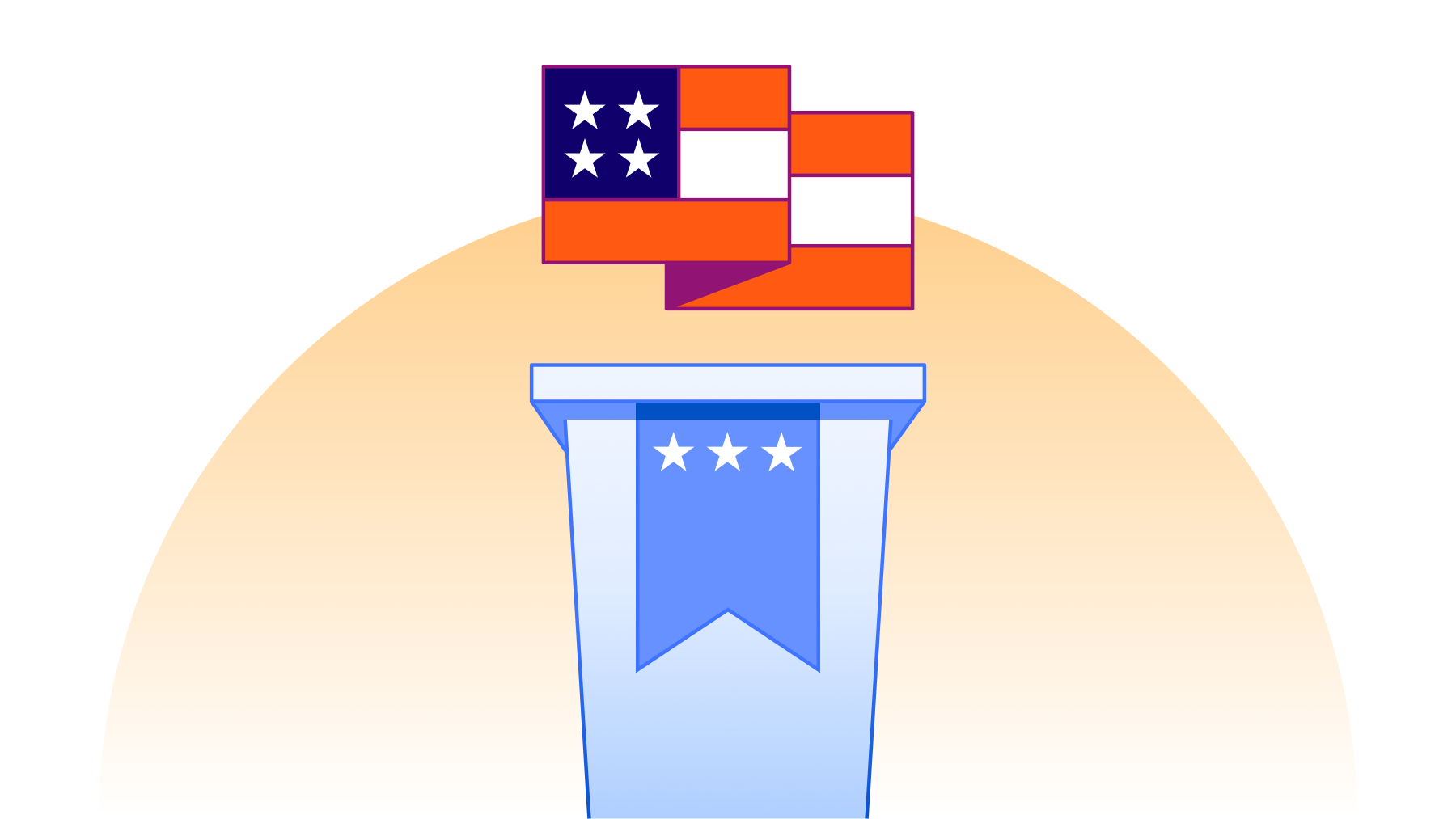
The 2024 Democratic National Convention (DNC) wrapped up on Thursday, August 22, in Chicago, Illinois. Since our blog post about Internet trends during the first presidential debate between President Joe Biden and former President Donald Trump on June 27, the presidential race has fundamentally changed. We experienced the attempted assassination of Trump, the Republican National Convention (RNC), Biden’s late July withdrawal from the race, and Vice President Kamala Harris being selected as the Democratic nominee and participating in her party’s convention this week. Here, we’ll examine trends more focused on DNS traffic to news and candidate-related sites, cyberattacks targeting politically-related organizations, and spam and malicious emails mentioning the candidates’ names.
Over 60 more national elections are scheduled to take place across the world this year, and we have been monitoring them as they occur. Our goal is to provide a neutral analysis of their impact on Internet behavior, which often mirrors human activities. Significant events, such as the total eclipse in Mexico, the United States, and Canada, and the Paris 2024 Olympics, have had an impact on Internet traffic. Our ongoing election report on Cloudflare Radar includes updates from recent elections in the European Union, France, and the United Kingdom.
Let’s start with an Internet traffic perspective on the Chicago area, where the Democratic National Convention took place from August 19 through August 22, 2024.
Internet traffic trends in Chicago
Internet traffic shifts during major events like elections – and there have been several this year – are typically more impactful than those from a single political party’s event. During the DNC in Chicago, Illinois, we didn’t observe an obvious pattern change, similar to the RNC that took place in Milwaukee, Wisconsin in June.
Throughout the convention, although we didn’t notice any significant drops or spikes in Chicago’s Internet traffic, there was a rise in traffic starting on August 15 and continuing through the first three days of the convention. Notably, traffic was 10% to 20% higher after midnight compared to the previous week.

DNS trends: Kamala Harris-related sites see accelerated growth
Shifting our focus to domain trends, our 1.1.1.1 resolver data highlights a more targeted impact from the DNC and preceding weeks. This analysis now includes Kamala Harris-related insights, as our earlier reports on the Biden-Trump debate and the Republican National Convention predated her selection as the Democratic nominee.
Kamala Harris’s official website, initially redirecting to Joe Biden’s website, became an independent dedicated site after July 21, following Biden’s announcement of his withdrawal and endorsement of Harris. Since then, aggregated daily DNS traffic to Kamala Harris-related domains has seen significant growth, particularly after June 29.
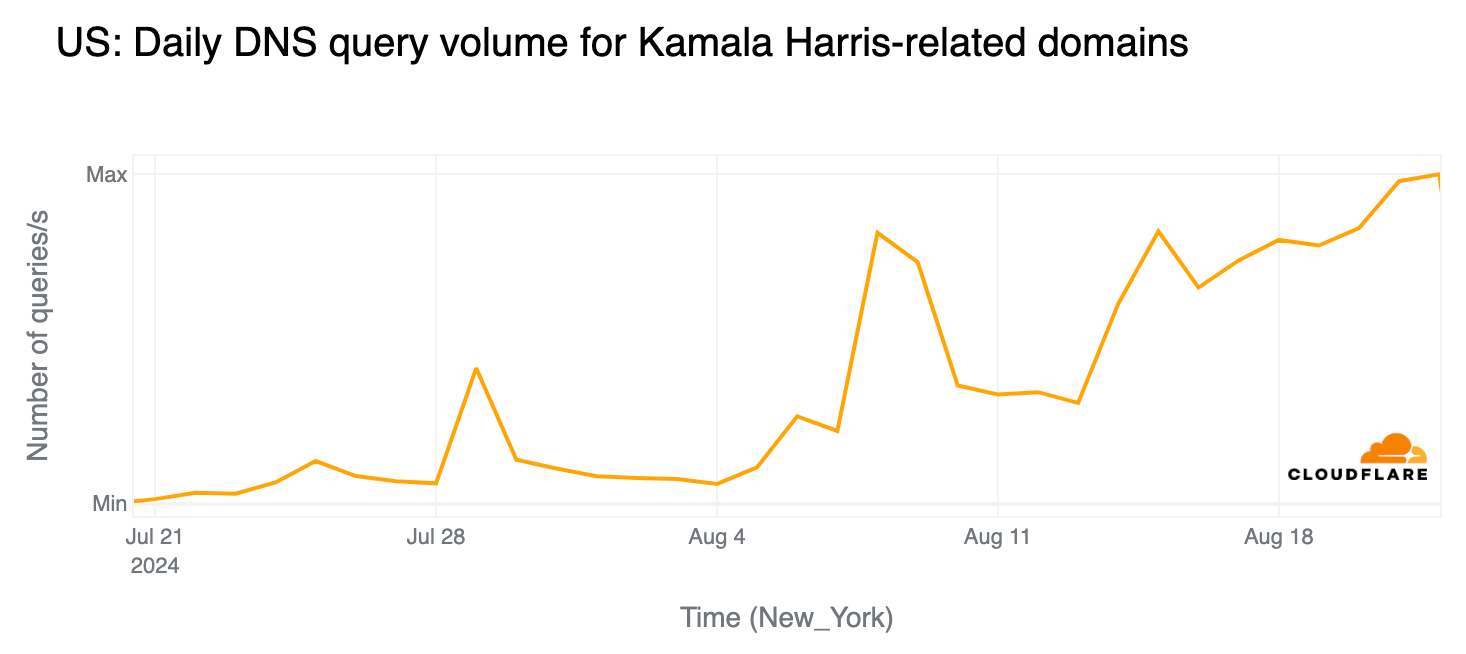
On August 6, the day Kamala Harris selected Minnesota Governor Tim Walz as her running mate, DNS traffic for Kamala Harris-related domains increased by 99% compared to the previous week. Following this announcement, as Harris and Walz campaigned together in various cities, DNS traffic initially peaked on August 8-9, showing increases of 896% and 845%, respectively. Another significant spike occurred on August 15, which persisted through the DNC, peaking on its fourth day, August 23, with a 21% growth in DNS traffic compared to the previous week.
From an hourly perspective, the impact of the convention on Kamala Harris-related sites is evident, with increased DNS traffic in the evenings coinciding with the convention’s key speakers. Traffic grew each day compared to the day before.

Here’s a summary of peak hourly DNS traffic to Kamala Harris’s-related domains on each day of the DNC, coinciding with key moments of the event:
Day 1, August 19: Peak at 23:00 EDT with a 313% increase in traffic compared to the previous week. This spike occurred around the time President Joe Biden appeared on stage.
Day 2, August 20: Peak at 00:00 EDT (August 21) with a 466% increase, following former President Barack Obama’s speech that closed the second day of the DNC.
Day 3, August 21: Peak at 22:00 EDT with a 70% increase just before Governor Tim Walz took the stage. Although this peak was higher than previous days, the percentage increase was lower due to higher traffic at the same time the previous week.
Day 4, August 22: Peak at 23:00 EDT with a 71% increase around the time of Vice President Kamala Harris’s speech.
Increase in DNS traffic to fundraising domains on day 4 of the DNC
During the DNC, we observed a rise in DNS traffic for Harris/Democrats fundraising domains. The main spike occurred on day 4 of the DNC, August 22, at around 21:00 EDT, with a 493% increase compared to the previous week. On that day, daily traffic increased by 92% compared to the previous week.

News: increased traffic during the DNC
Like the RNC before it, the DNC sparked significant interest in US news organizations, resulting in an uptick in aggregated DNS traffic to general US news sites. This increase typically occurred just after the final speaker of the evening.
On day 1 of the DNC, traffic to US news organizations was 11% higher compared to the previous week at 23:00 EDT, coinciding with President Biden’s appearance. On day 2, when President Obama concluded the evening, DNS traffic to US news sites increased by 10%, continuing to rise thereafter. On day 3, during the hour when Vice Presidential candidate Tim Walz spoke, DNS traffic to US news sites spiked by 21% at 23:00 EDT. The final day (day 4) saw a 28% increase at 23:00 EDT, around Vice President Kamala Harris’s speech.

Attacks targeting politically-related websites
Attacks on political parties have remained a significant threat in an election-filled 2024. In Europe, we’ve seen political parties and associated websites targeted around elections. We previously reported on DDoS attacks around the Republican National Convention, and these types of attacks continued during the weeks ahead of the Democratic National Convention.
Since July 21, 2024, Cloudflare has blocked DDoS attacks targeting three US politically-related organizations. A site associated with one of the major parties (represented by the blue line on the chart) was attacked on July 23, and again just before the DNC.
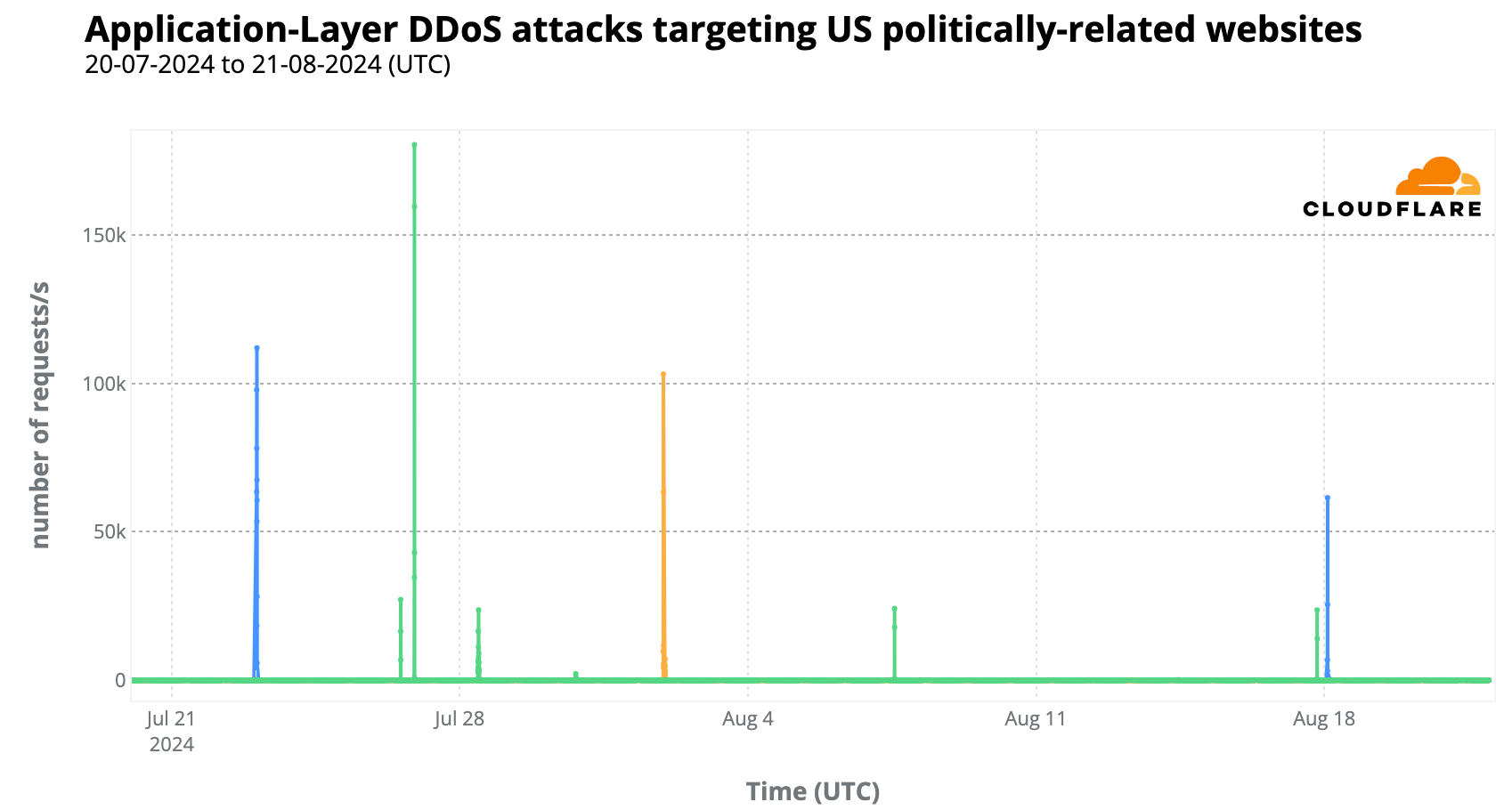
The largest DDoS attack recorded (indicated in green) targeted another US politically-related website on July 26, peaking at 180,000 requests per second (rps) and lasting about 10 minutes. There were other smaller attacks, earlier on the same day, and on July 28.
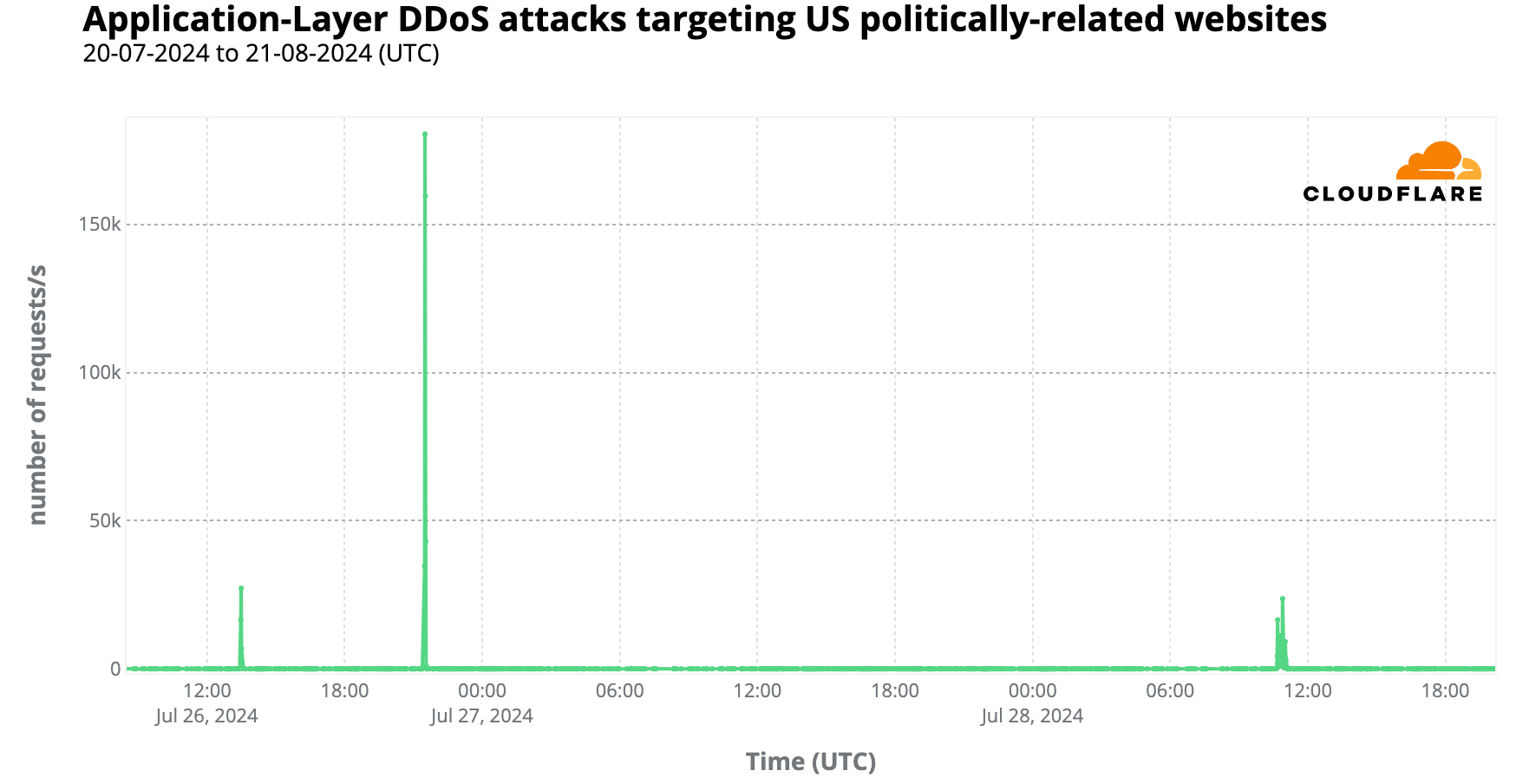
Another site, focused on political fundraising, experienced a smaller attack on August 1, also lasting 10 minutes and peaking at 103,000 rps.
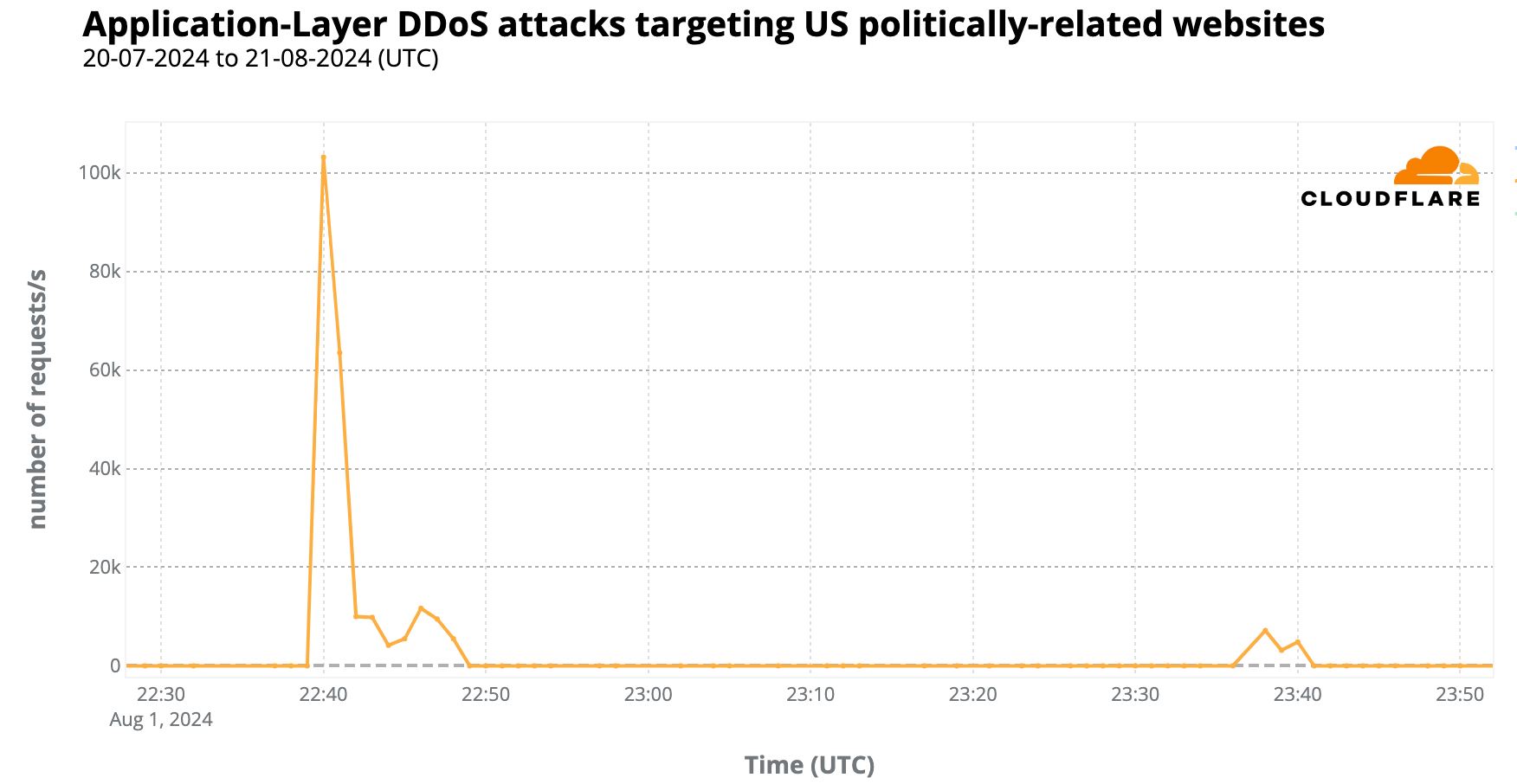
The most recent attacks we’ve observed occurred on August 17-18 (UTC time), targeting a politically-related website (blue line) and another politically-related website (green line). The former peaked at 62,000 rps on August 18, while the latter reached 24,000 rps on August 17.
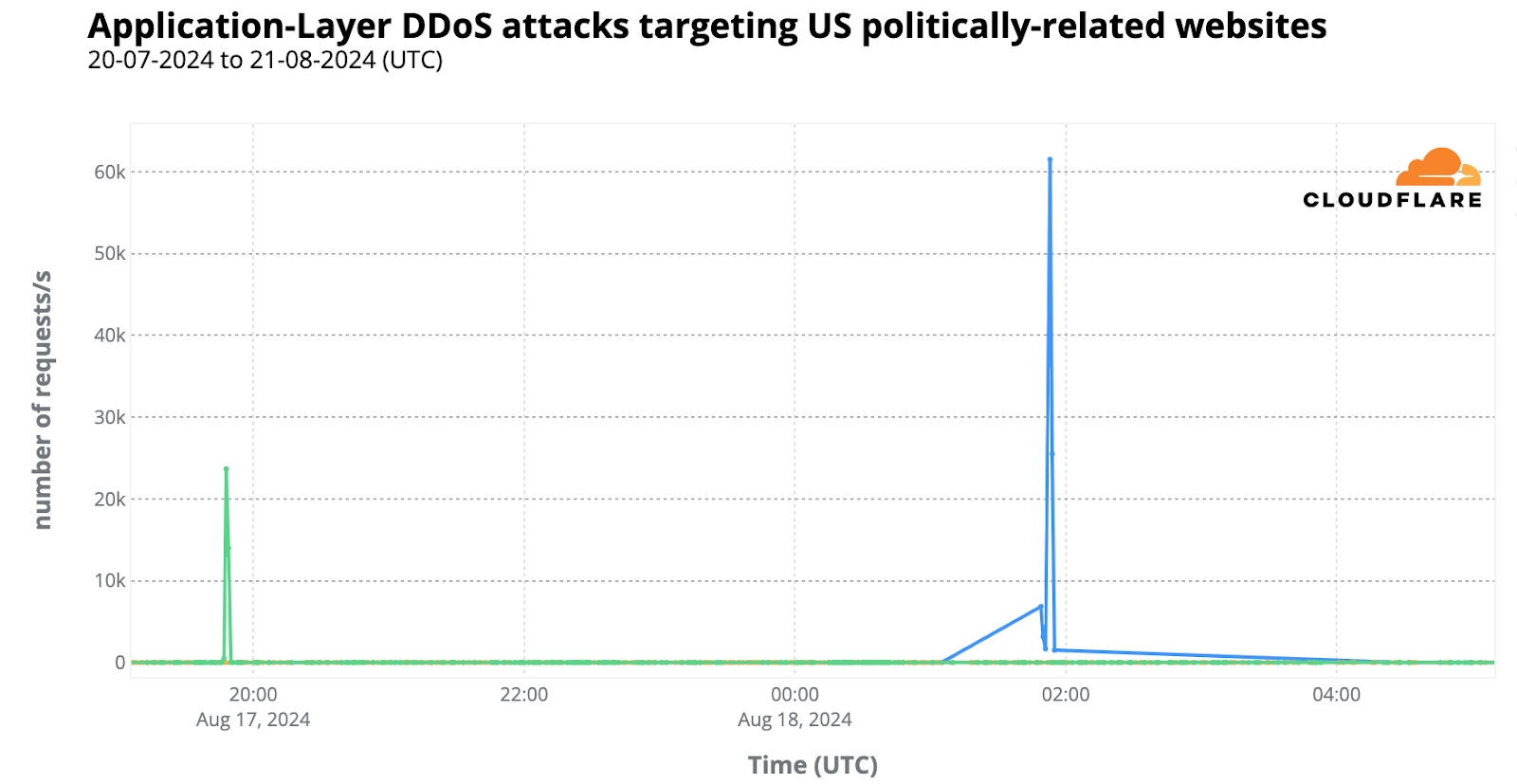
As highlighted in our Q2 DDoS report, most DDoS attacks are short-lived, as exemplified by the two mentioned attacks. Also, 81% of HTTP DDoS attacks peak at under 50,000 requests per second (rps), and only 7% reach between 100,000 and 250,000 rps. While a 24,000 rps attack might seem minor to Cloudflare, it can be devastating for websites not equipped to handle such high levels of traffic.
Email trends: candidate-related spam and malicious messages
From another cybersecurity angle, trending events, topics and individuals often attract malicious, phishing, and spam messages, and also more emails in general. Our earlier analysis covered email trends involving “Joe Biden” or “Donald Trump” since January, concluding just after the Biden-Trump debate in late June. From June 1, 2024, through August 21, Cloudflare’s Cloud Email Security service processed around 14 million emails that included the names “Donald Trump”, “Joe Biden”, or “Kamala Harris” in the subject, with 7.4 million referencing Trump.
The next chart highlights a surge in emails mentioning Trump in mid-July, contrasting with a drop of emails mentioning Biden in the subject, who saw a brief uptick on July 22-23 following his withdrawal from the race, and on August 20, the day after his DNC speech.

Focusing on the period since July 21 – when changes in the presumptive Democratic candidate occurred – over 3.2 million emails mentioned “Donald Trump”, around 1.2 million mentioned “Joe Biden”, and over 2 million mentioned “Kamala Harris” in the subject. Examining spam and phishing messages, 34% of emails with Trump’s name were spam, and 3% were malicious. For Kamala Harris, 0.8% were spam and 0.2% were malicious, while Biden’s figures were 1.1% for spam and 0.1% for malicious.
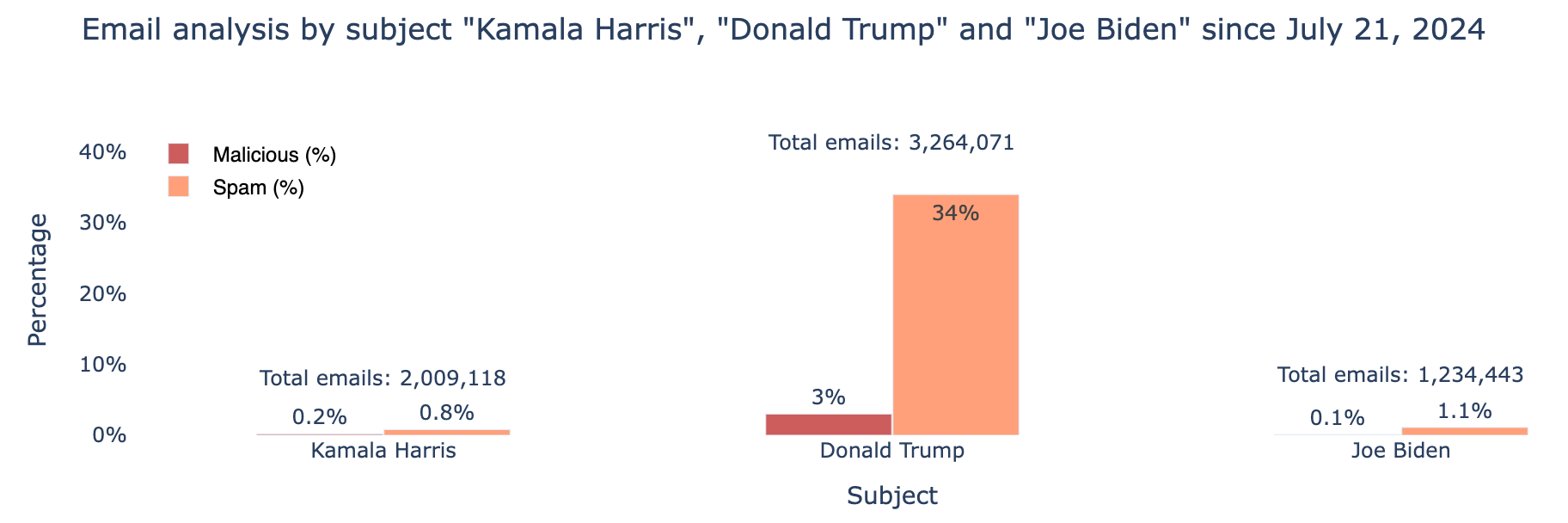
To better understand the elevated percentages of spam and malicious emails mentioning “Donald Trump,” it’s important to look at the trend over time. Notably, after July 15, there was a significant rise in all emails mentioning Trump in the subject, as the previous line chart also shows, and that also included a higher percentage of emails classified as spam.

Additionally, Republican Vice Presidential Candidate JD Vance and Democratic Vice Presidential Candidate Tim Walz also influenced email trends. JD Vance was announced as Donald Trump’s running mate on July 15, so we start there – Tim Walz’s announcement came later, on August 6. Emails with “Tim Walz” mentioned in the subject (over 530,000) outnumbered those with “JD Vance” (over 241,000). Spam made up 1% of emails with Vance’s name and 0.1% were malicious, and for Walz, 0.7% were spam and 0.03% malicious.
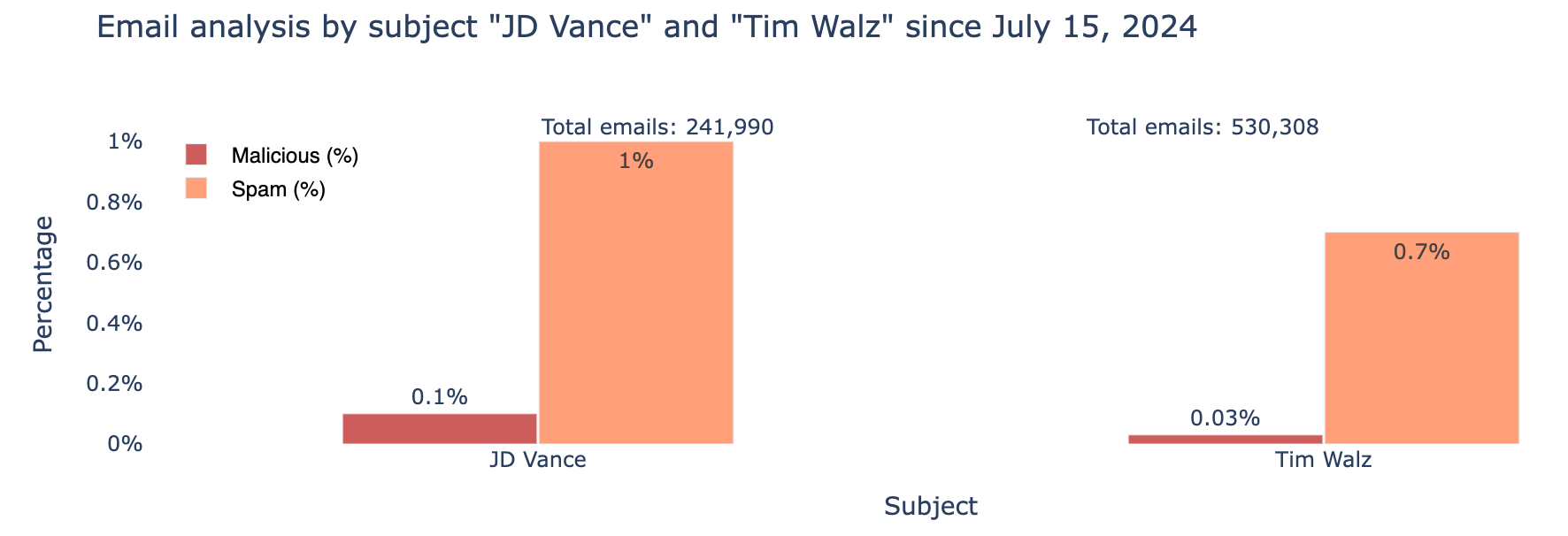
Conclusion: high intensity election year
In this analysis of the Democratic National Convention, we’ve observed trends similar to those seen during the Republican National Convention. However, with Kamala Harris becoming the Democratic presidential candidate recently, there has been a noticeable increase in DNS traffic to both Kamala Harris-related domains and Democrats’ fundraising domains.
We have also noted that DDoS attacks targeting US politically-related organizations continue, and emails mentioning the candidates in the subject (including spam and malicious emails) have increased.
If you’re interested in more trends and insights about the Internet and elections, check out Cloudflare Radar, specifically our 2024 Elections Insights report. It will be updated throughout the year as elections (or election-related events) occur.
Cloudflare's connectivity cloud protects entire corporate networks, helps customers build Internet-scale applications efficiently, accelerates any website or Internet application, wards off DDoS attacks, keeps hackers at bay, and can help you on your journey to Zero Trust.
Visit 1.1.1.1 from any device to get started with our free app that makes your Internet faster and safer.
To learn more about our mission to help build a better Internet, start here. If you're looking for a new career direction, check out our open positions.
